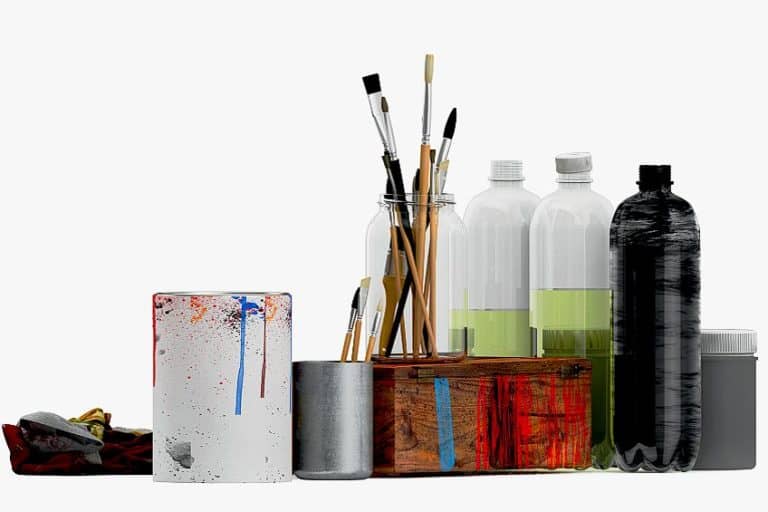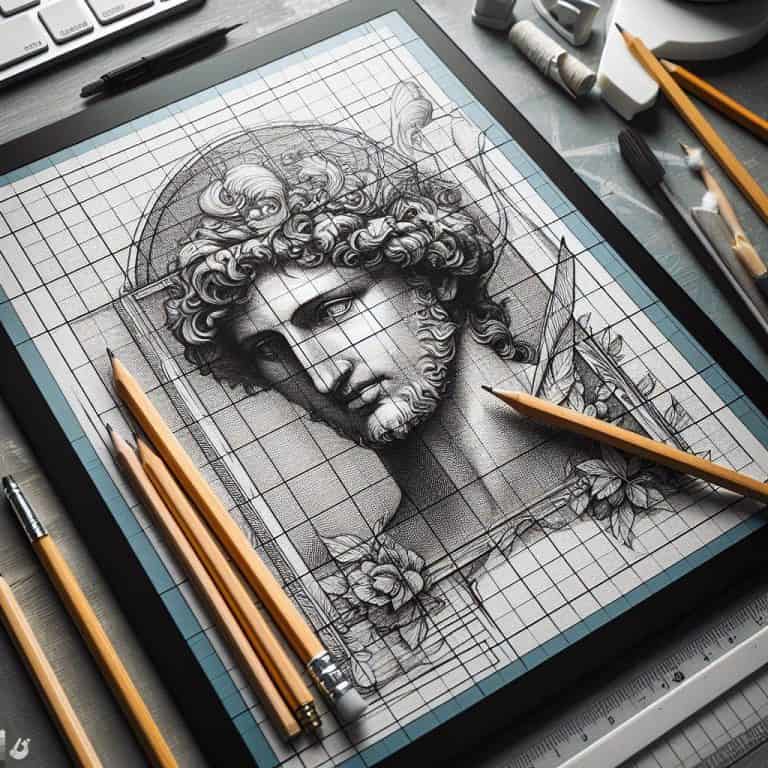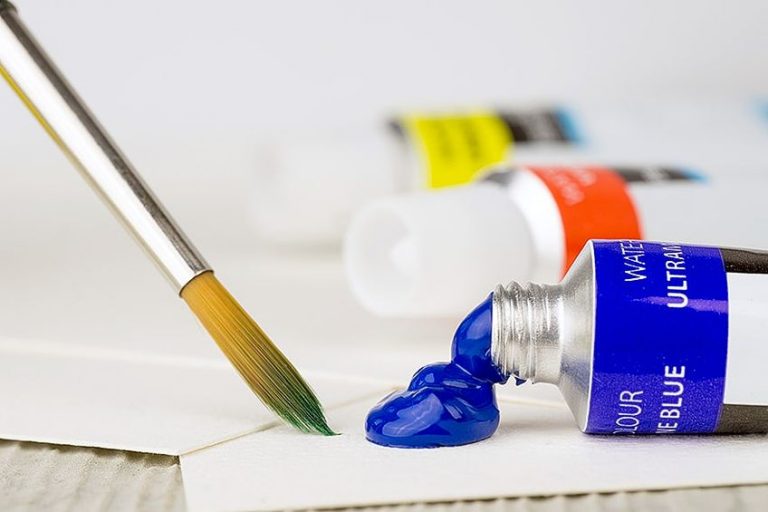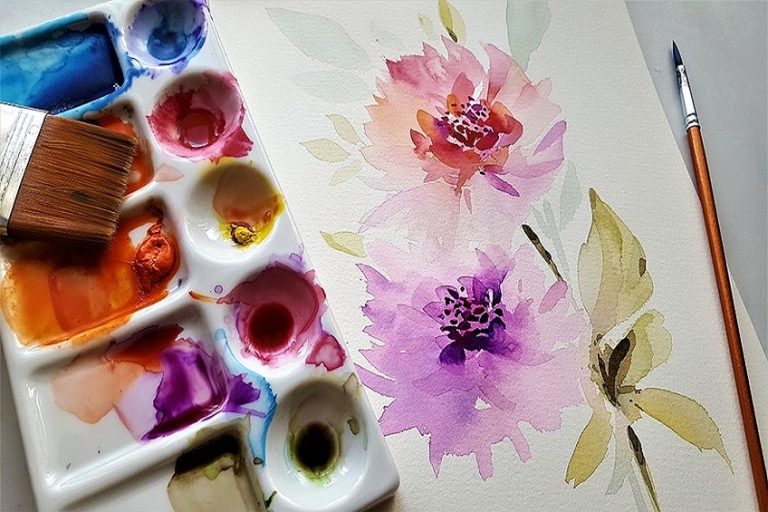Negative Space in Painting – An Effective Art Technique
What is negative space in painting and are there examples of negative space? Painting negative space in your artwork is just as important as painting positive space. Paintings with negative space properly applied appear to be more balanced to the viewer. Read further if you would like to find out more about negative space drawings and how to create negative space art!
What Is Negative Space and How Is It Used?
You have most likely already appreciated negative space in paintings without even realizing what it is. When we talk about painting negative space, we are referring to the areas between and around the main subject of our image. In this article, we will take an in-depth look at negative space art, exploring how it can affect the composition of your artwork overall, how paintings with negative space appear more aesthetic, and examples of negative space in painting.
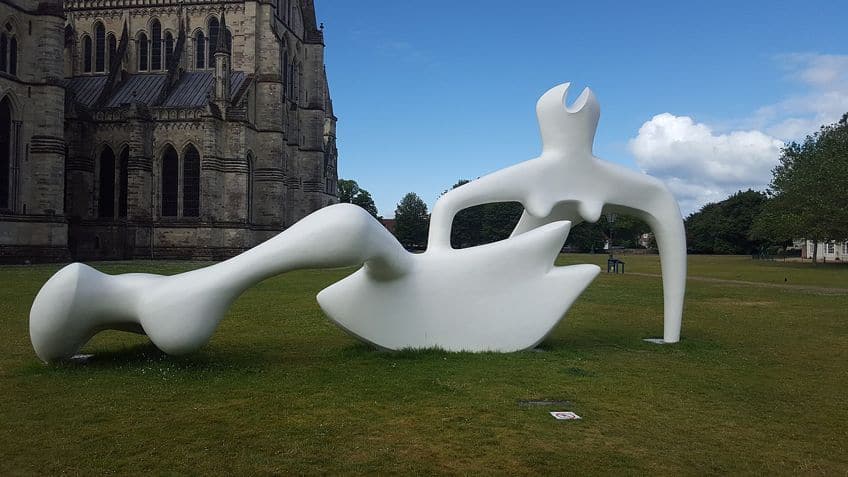
Understanding How Negative Space Works
All artworks have negative space, yet some use it more effectively than others. While all subjects in your artwork will have a certain shape and form, the negative space in artwork also has a shape.
Probably the best example we can provide when it comes to a negative space drawing is Rubin’s vase.
The Rubin’s Vase Example
This is regarded as one of the best examples of negative space as the effect is very apparent. Rubin’s vase is a perfect example of an optical illusion created using positive and negative space with two possible interpretations. It was named after Edgar Rubin, the Danish psychologist, who defined it for the first time in 1915. The illusion consists of a visual that, based on the audience’s perception, can be regarded as either two faces in profile or a vase. When observing the picture, the brain can flip between seeing the faces and seeing the vase, but it cannot perceive both at the same time.

This is a famous illustration of how our brains make meaning of visual information by using context and prior knowledge. It is frequently used in psychological research to explore the brain processes that underpin perception and attention. The positive space in the vase illusion comprises the white faces in profile or the black vase, while the negative space comprises a white or black backdrop. The positive and negative regions flip roles based on which interpretation is seen, resulting in two distinct visual experiences.
The Figure-Ground Relationship
The figure-ground relationship in art describes the connection between positive and negative space in a piece of art. The figure-ground connection is strongly associated with the notion of contrast, which relates to the differences between an artwork’s positive and negative regions. An artist can achieve an impression of depth and three-dimensionality in their artwork by using a significant contrast between the figure and the ground.
One can also employ negative space to create a dramatic contrast with positive space, making the subject stand out more vividly.
This can be accomplished by darkening or lightening the negative space in comparison to the positive area, or by utilizing a different color or texture. In a portrait, for instance, negative space surrounding the subject’s face could be used to provide depth and direct the viewer’s attention to the subject’s characteristics. One can create a significant contrast by rendering the negative space darker than the subject’s face. This allows the face to stand out more distinctly.
Benefits of Negative Space
Negative space may also influence a painting’s tone and ambiance. A large amount of negative space can evoke feelings of emptiness or isolation, whilst a cluttered and crowded background might evoke feelings of chaos or vitality. In a painting, negative space can produce a sensation of movement. One can create a fluid and lively composition by employing negative space to represent the movement’s direction or to provide a sense of flowing lines.
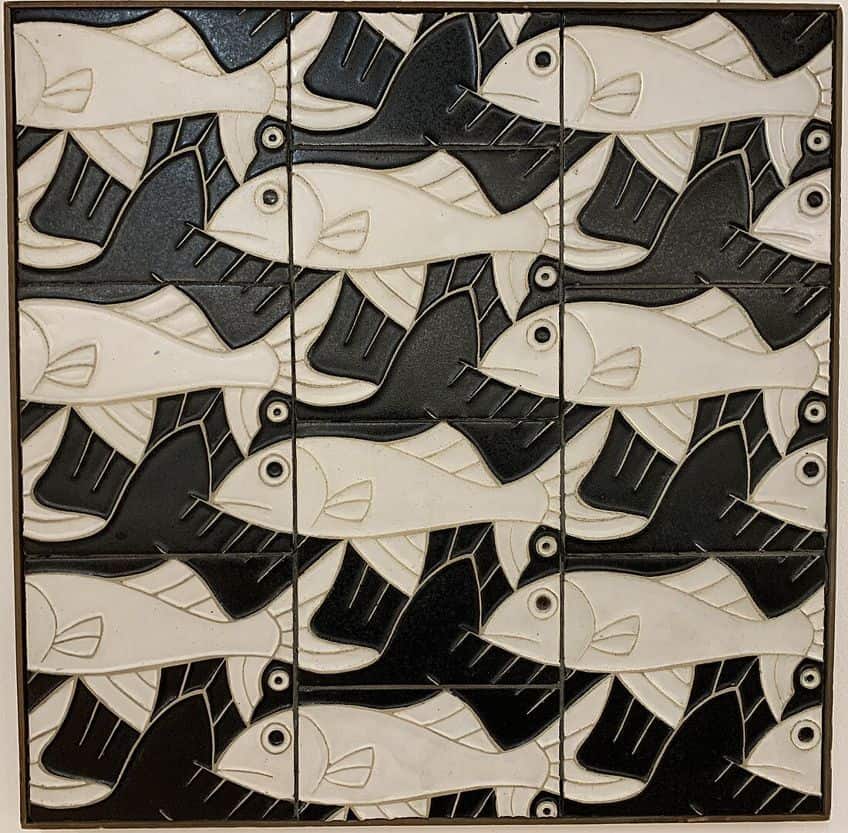
Effect on Composition
Negative space can also be used to establish a sense of harmony. One can create a cohesive and unified composition by employing negative space to duplicate or repeat features and forms seen in positive space. Negative space could also be utilized to give an impression of minimalism and simplicity. You can produce a quiet and relaxing composition by minimizing the amount of detail and focusing on negative space. In an artwork, negative space can also be utilized to indicate scale.
You can create a dramatic and compelling composition by employing negative space in order to generate a feeling of immensity or insignificance.
Negative space can be utilized to draw attention to the painting’s subject. You can generate an atmosphere of deep focus and direct the audience’s attention to the main subject of the painting by surrounding it with negative space. You can also use negative space to produce symbolism. An artist can generate a deeper and more nuanced meaning in a composition by employing negative space to convey a certain concept or idea.
Using Negative Space to Establish Balance
The perception of visual equilibrium and harmony created when the parts of a painting are organized in such a manner that no one region seems too light or heavy is referred to as balance. When negative space is employed well, it can contribute to the painting’s feeling of balance by engaging with the positive space – when negative space is uniformly spread across the picture, it can contribute to the artwork’s equilibrium. A symmetrical composition is one that is reflected on both sides of a central axis and you can create balance by employing negative space on each side of this axis.
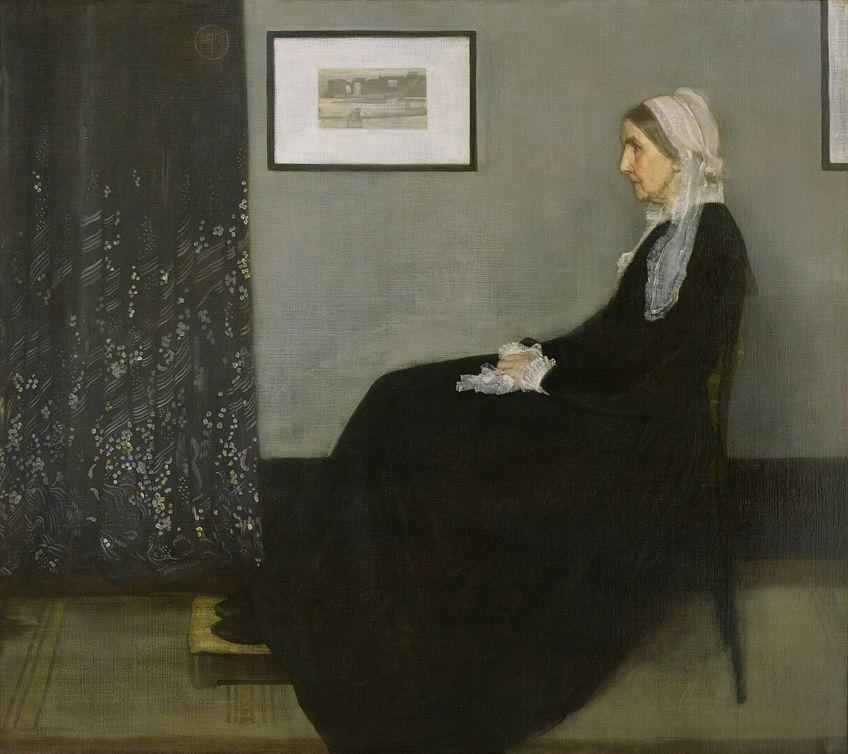
Popular Examples of Negative Space
Negative space is apparent in all art forms, but it is probably the popular logo designs of renowned brands that most clearly exhibit the concept. Take, for example, the FedEx logo. You have probably seen it on numerous occasions, but did you ever notice the arrow before? If not, this is because it has been incorporated rather subtly, with the arrow occupying the negative space between the letters “e” and “x”. This is also a great example of how negative space can be used to add symbolism to your designs.
As a delivery service that transports goods from one point to another, an arrow makes sense as it is symbolic of movement and direction.
Another popular logo example of the effective use of negative space is the F1 logo. The logo comprises a capital “F” next to red stripes that symbolize speed and movement. Between the letter ”F” and the red stripes, the negative white space forms a “1”. The logo for the Guild of Food Writers is another great example. At first glance, the black positive space that forms the ink pen nib is the most prominent aspect of the design. Yet, if one looks closer, one will notice that the white negative space forms the shape of a spoon. The positive black pen nib symbolizes the “writers” and the spoon symbolizes the “food”.
Top Negative Space Techniques
Now that you know what effect negative space can have on your art, let’s see how you can add it to your own work. There are several different techniques that you can use to add depth, interest, and balance to your art. These techniques include contrasting values, simplified shapes, and the use of color.

Observation and Simplification
Practicing recognizing negative space in the world around you is one of the greatest ways to understand how to utilize it in your own artwork. Search for negative spaces between objects and see them as forms. When it comes to using negative space in your artwork, there are times when less is more. To make a more aesthetically attractive piece, don’t be scared to simplify your forms and arrangements. Simplifying shapes is an excellent method for incorporating negative space into your artwork. Rather than focusing on the thing itself, consider focusing on the various shapes that comprise the object and the negative space surrounding it.
This will help you come up with a more engaging composition.
Contrast and Experimentation
Contrasting values may assist in the appearance of dimension and contrast in an artwork. To establish a contrast between the negative and positive areas in your composition, use both light and dark values. Don’t be scared of experimenting with composition in order to add negative space to your art. Experiment with different compositions to determine what works best for your composition. Keep in mind that negative space is equally as crucial as positive space when it comes to making aesthetically attractive artwork. Sketching is an excellent technique to practice using negative space in your artwork. Do fast negative space drawings of objects, paying attention to the negative space surrounding them. This will help you gain confidence in using negative space in your artwork.
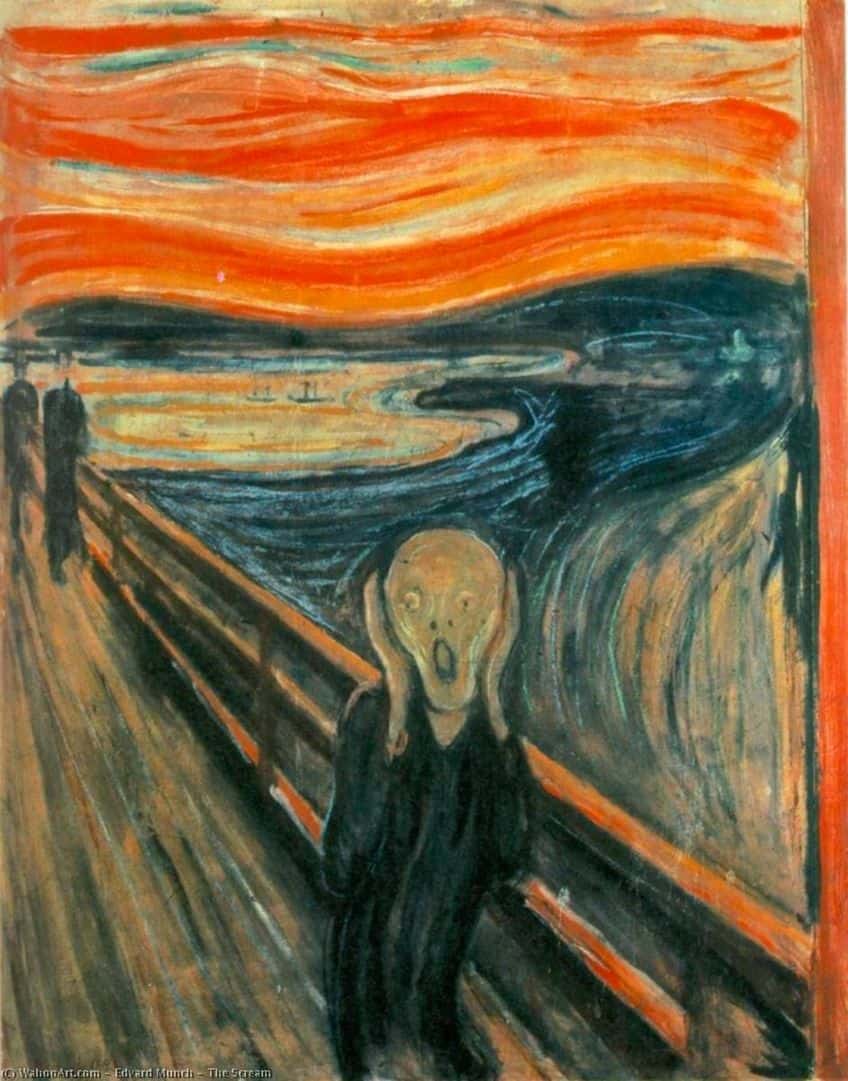
The Utilization of Color
Color is an essential element in art, and it may be utilized to achieve a range of effects, such as adding depth and mood to negative space. Warm colors seem to move forward, whereas cold hues move back. You can easily create the impression of depth in your artwork by utilizing warm colors in the positive space and cold colors in the negative space. Complementary hues are opposing on the color wheel, yet when combined, they could provide an impression of contrast and dimension. Incorporate complementary colors in the negative space to add contrast with the positive space. You can also add color to negative space to create a unique ambiance.
Shades of green or blue, for instance, can produce a serene and pleasant ambiance, but darker, more subdued hues might generate a feeling of mystery or anxiety.
Apply the Techniques of the Masters
The best way to learn is by observing how the masters of art created paintings with negative space. There are many art styles and genres that effectively utilize negative space to enhance their works. Several abstract expressionist artworks use negative space to convey movement and vitality. Artists such as Mark Rothko and Jackson Pollock were able to generate depth and energy in their works by leaving vast amounts of negative space. Negative space is frequently also used by realist painters to enhance mood and depth.

Landscape painters, for instance, often employ negative space to indicate distant peaks or clouds, which helps to establish a sense of vastness. Sumi-e is a classic Japanese ink painting method in which negative space is frequently used to produce balance and harmony in their works. Sumi-e artists employ black ink to make tiny brushstrokes on paper, usually leaving huge regions of negative space. Pop painters such as Roy Lichtenstein and Andy Warhol usually employed negative space in their works to produce contrast and aesthetic appeal. These artists were able to create a striking and eye-catching compositions by leaving big swaths of negative space surrounding their objects.
As we have discovered, the correct use of negative space in painting is just as equally important as the correct use of positive space. When properly arranged, both positive and negative spaces serve to balance the composition perfectly. By following the tips and advice in this article, you will be creating negative space artwork in no time!
Frequently Asked Questions
What Is Negative Space?
If you look at any object, you will notice that its shape is determined just as much by the empty spaces in and around it as the shape of the object itself. The object’s shape can be defined as occupying positive space, whereas the gaps in and around it are referred to as negative space. A good balance of both will equate to an excellent image.
How Does One Use Negative Space?
There are many ways in which artists can effectively utilize negative space. You can use it to bring more focus to the main subject through the use of contrast. You can also use colors in the negative and positive spaces to accentuate the object. Try using cool and warm colors or various complementary colors in both the negative and positive spaces. This will assist in contrasting the opposing spaces even more.
Matthew Matthysen is an educated multidisciplinary artist and illustrator. He successfully completed his art degree at the University of Witwatersrand in South Africa, majoring in art history and contemporary drawing. The focus of his thesis was to explore the philosophical implications of the macro and micro-universe on the human experience. Matthew uses diverse media, such as written and hands-on components, to explore various approaches that are on the border between philosophy and science.
Matthew organized various exhibitions before and during his years as a student and is still passionate about doing so today. He currently works as a freelance artist and writer in various fields. He also has a permanent position at a renowned online gallery (ArtGazette) where he produces various works on commission. As a freelance artist, he creates several series and successfully sells them to galleries and collectors. He loves to use his work and skills in various fields of interest.
Matthew has been creating drawing and painting tutorials since the relaunch in 2020. Through his involvement with artincontext.org, he has been able to deepen his knowledge of various painting mediums. For example, watercolor techniques, calligraphy and lately digital drawing, which is becoming more and more popular.
Learn more about Matthew Matthysen and the Art in Context Team.





